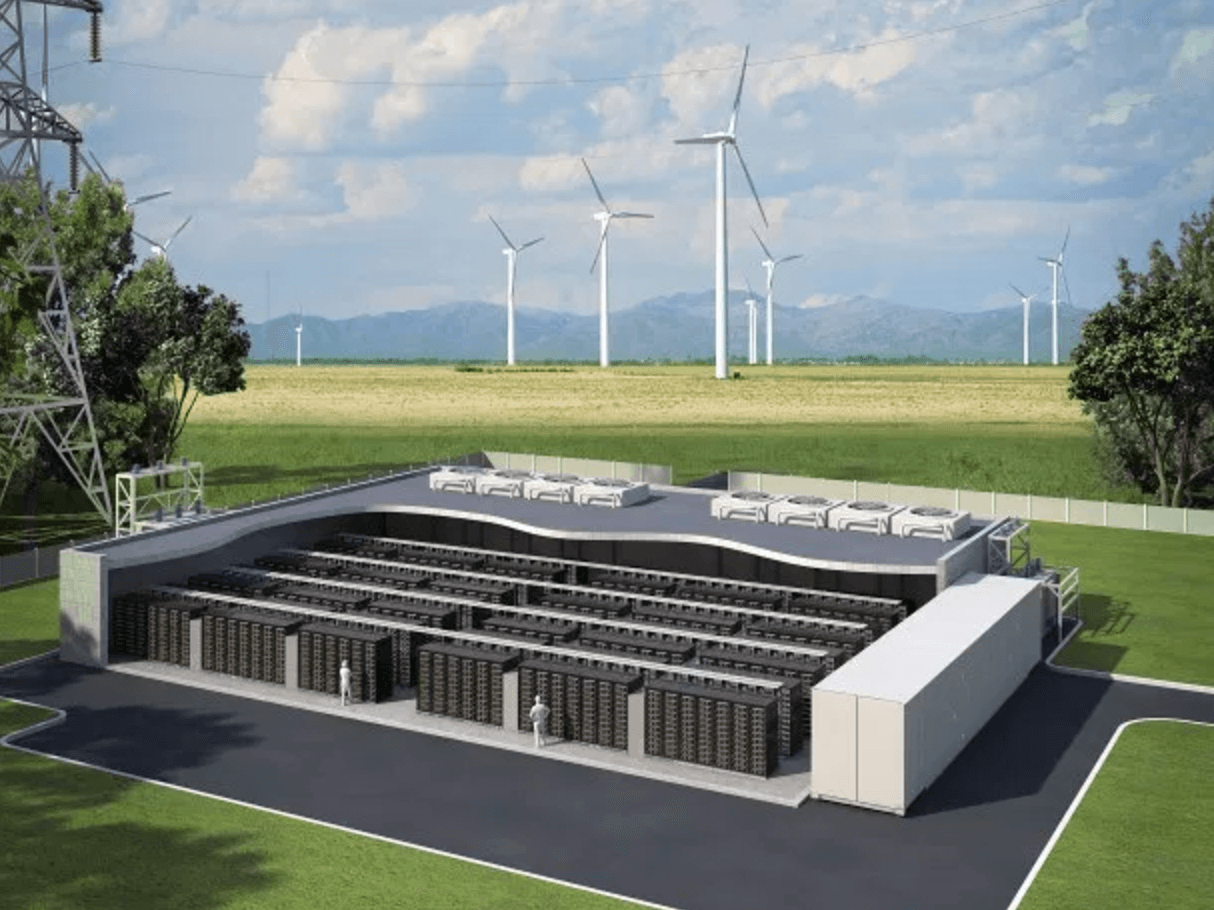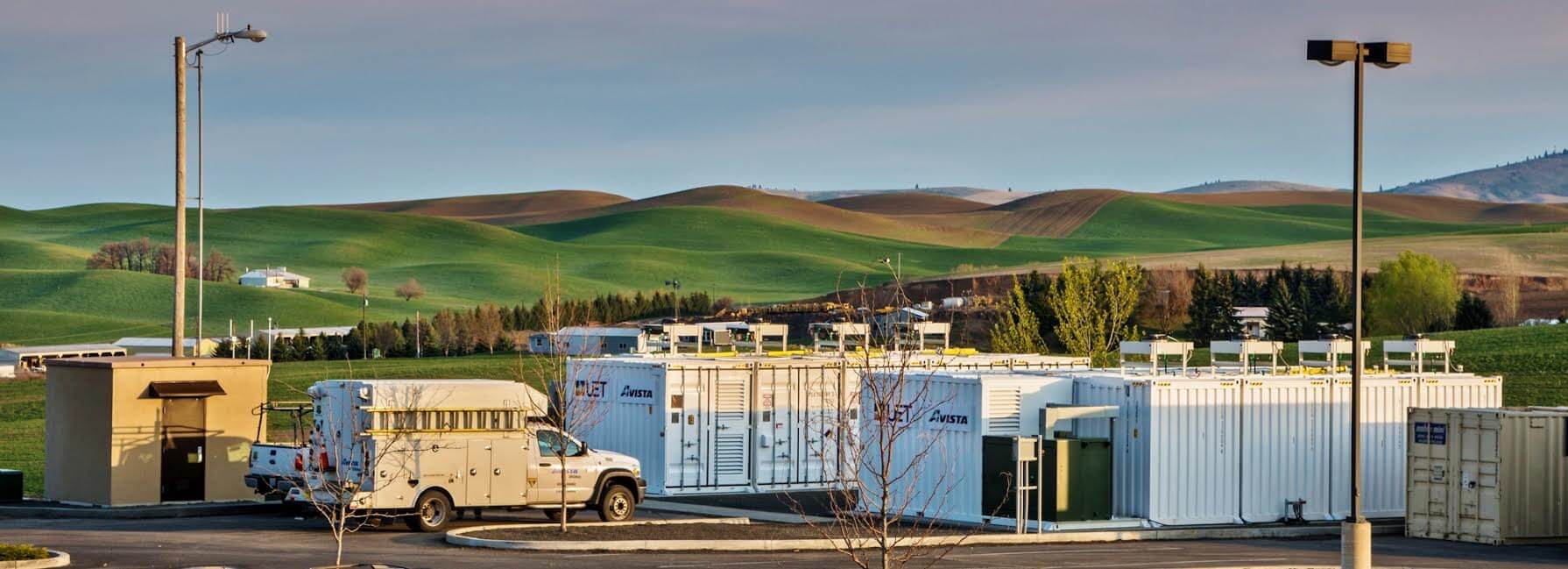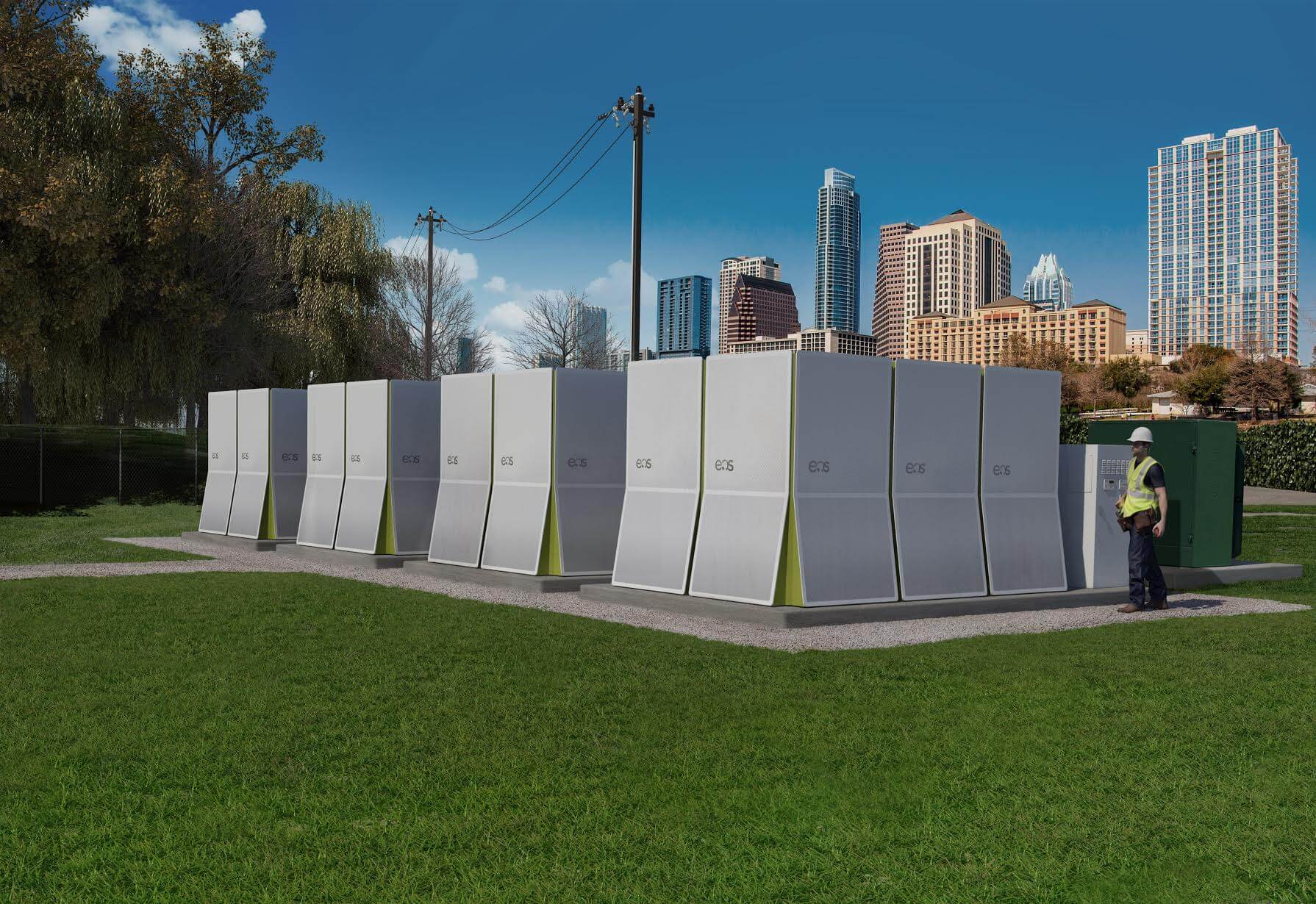Written by Chris McKay
Director North American Sales, Power Systems
Northern Power Systems

A typical lithium-ion battery system can store and regulate wind energy for the electric grid.
Back in 2017, GTM Research published a report on the state of the U.S. energy storage market through 2016. The study projects that by 2021 deployments of stored energy — a combination of residential, non-residential, and utility systems — will grow to over 2 GW, over 10 times greater than current levels. Such a drastic increase in deployment would, according to estimates, lead to an energy storage market worth $2.8 billion.
David Hart and Alfred Sarkissian of George Mason University studied grid-scale batteries in the United States and reported their findings to the U.S. Department of Energy in 2016. One major takeaway from the study stated that lithium-ion batteries accounted for about 95% of deployed systems in the grid-scale battery market. Since that time, however, redox-flow and zinc-hybrid ion batteries have emerged as significant technologies in the market.
Although utility-scale energy storage installations saw a slight drop in the first three quarters of 2018, the industry is expected to gain momentum this year. Storage systems may support renewable projects such as wind and solar, by regulating the variability of these energy sources and increasing reliability to deliver on-demand power.
There are performance-specific features and applications for each of these battery systems, however, the goal of energy storage developers is the same: to choose a battery application that will ensure an affordable, reliable, and efficient energy-storage system.
Lithium-ion batteries
Lithium-ion (Li-ion) batteries were introduced commercially by Sony in 1991 for use primarily in consumer products. Since then, they have become the most widely used battery technology for grid-scale energy storage. Lithium-ion batteries have the versatility to handle smaller-scale applications, such as powering electric vehicles, as well as grid-scale applications requiring megawatts of power for hours at a time.
Li-ion batteries get their name from the transfer of lithium ions between the electrodes, both when energy is injected for storage purposes and when it is extracted. Instead of metallic lithium, Li-ion batteries use lithiated metal oxides as the cathode (the negatively charged electrode by which electrons enter a device), and carbon typically serves as the anode (the positively charged electrode by which electrons leave a device). Unlike other batteries with electrodes that change by charging and discharging, Li-ion batteries offer better efficiency because the ion movements leave electrode structures intact.
Within the lithium family there are a variety of different chemistries and designs from numerous suppliers. Innovation and manufacturing volume have continued to yield improvements in cost, energy density, and cycle life.
For storage durations of 30 minutes to three hours, lithium batteries are currently the most cost-effective solution, and have the best energy density compared to the alternatives. For longer durations, lithium may or may not be the most cost-effective choice depending on the application, particularly when considering lifetime costs. Lithium batteries are also highly configurable into a variety of string sizes and battery racks to create a wide range of voltages, power ratings, or energy increments. This allows for application-specific designs that can range from a few kilowatts with a few minutes of storage, up to multi-megawatt solutions with hours of storage that may be used at a utility substation or a wind farm.

This 1-MW, 4-MWh energy storage system in Pullman, Washington, is operated by Avista Corporation. The system uses Northern Power FlexPhase converters and UET redox-flow batteries to provide numerous services to the grid and end users, including load shifting, black start capability, renewables integration, and resiliency.
Lithium battery strings typically have a narrower voltage range requirement and higher minimum DC string voltage, which helps minimize the cost of the power-converter system relative to other battery technologies. Overall efficiency for an energy storage system (ESS) using lithium batteries will usually be higher than using flow or zinc-hybrid batteries. Discharge rate, climate, and duty cycle play a big role in efficiency. The duty cycle is the cycle of operation of a machine or device that produces intermittent work instead of continuous.
For example, a lithium-based ESS rated for two hours at rated power will have an AC round-trip efficiency of 75 to 85%. However, a system rated for 30 minutes may have an efficiency in the 65 to 75% range. Of course, the smaller 30-minute battery will have a lower initial cost. All batteries are generally more efficient and have a longer life when operating for longer discharge periods.
Over time all lithium batteries degrade, and a replenishment, replacement, and disposal strategy is necessary when designing a system for a 20-year operating life. Although the solid-state nature of lithium batteries means fewer moving parts, the relatively small building blocks mean there is a large part count that requires a more-sophisticated string monitoring and battery management system compared with flow or zinc-hybrid batteries.
Redox-flow batteries
NASA studied the use of redox-flow batteries (RFB) for the space program during the 1970s, and the concept of using chemical reduction and oxidation reactions for energy storage dates back even further.
In RFBs, two chemical components are dissolved in liquids within the system, and are separated by a membrane. The membrane facilitates the ion exchange and the electric current flows, while the liquids are kept separate in anolyte and catholyte tanks. The chemical reduction and oxidation reactions that take place in these tanks store the generated energy in a liquid electrolyte solution and are what the “redox” (reduction, oxidation) name refers to.
Similar to lithium batteries, there are multiple types of flow batteries with a variety of chemistries. Most commercial efforts for grid-scale solutions are using some form of vanadium, iron, bromine, or sodium solution.
RFBs are unique compared to traditional batteries because the power (kW) rating of the system is based on the power stack size selected, and the energy (kWh) capacity is independently selected based on the storage tank size and volume of electrolytes in the tanks. In principle, this means that any combination of energy and power can be configured. In practice, however, the infrastructure required for pumping and managing the tanks becomes economically viable for systems with four hours or more of energy, when compared to the rated power of the power stacks.
Many flow batteries are characterized by extremely long cycle life—tens of thousands of cycles, or (theoretically) unlimited cycle life. For example, there is no inherent degradation of the vanadium solutions as ions are exchanged between the tanks, and there is an assumed residual value of the vanadium solution at the end of life of the system. Although they typically have a higher initial cost relative to other batteries, the lifetime costs may be lower for flow batteries, especially in high-cycle applications.

The Eos Aurora 1000 is an energy storage system that meets the requirements of the grid-scale market. It uses zinc-hybrid cathode batteries, and can be scaled and configured to reduce cost and maximize profitability.
Flow batteries have a lower energy density than a comparable lithium solution and are typically characterized by a larger footprint, or the area of land required for a particular storage device or system. However, for many sites, the footprint is not a drawback or determining factor of the viability of a project. For example, utility-owned property can usually accommodate stacked tanks (15 to 20 feet high).
In these cases, four-hour flow battery systems can have a smaller footprint than a comparable lithium-based storage system. The weight of lithium battery containers typically makes stacking impractical.
There are some misconceptions that since flow batteries are sized for four hours or more of discharge at rated power, they cannot perform frequency regulation or other short duration tasks. In fact, flow batteries are ideally suited for long-duration peak shifting (which is altering the time of day at which electricity is used to reduce “demand charge” on electricity use) or demand-shifting duties, and with the short-duration services. In this stacked use case, the high cycle life is highly valuable. The round-trip AC-to-AC efficiency for flow batteries is typically 65 to 75%. This is a bit lower for higher charge and discharge rates, and vice versa.
Zinc-hybrid batteries
Zinc-hybrid technology is among the latest advanced chemistries with early field results in grid-scale storage use cases. The first rechargeable zinc-based batteries came in 1996 and were eventually used to power small and mid-sized buses in Singapore. The proliferation of electric vehicles and distributed energy resources have ramped up the demand for battery systems that are affordable to produce.
Zinc-hybrid technology also holds the promise of a purpose-built battery for grid-scale solutions that could leapfrog competitive technologies with regard to cost. Zinc is widely available and typically less expensive than the materials used to create lithium-ion or flow batteries. Zinc-hybrid batteries are at an earlier stage in the commercialization process, so their costs have further to fall than most other emerging battery technology solutions.
In zinc-hybrid batteries, a porous anode is formed by a mass of zinc particles and then saturated with an electrolyte during discharge. Hydroxyl ions formed at the cathode by an oxygen reaction move into the zinc paste to form zincate, which releases electrons that travel to the cathode. Similar to flow batteries, the technology lends itself to four-hour type solutions—four hours of energy for discharge at rated power.
Similar to lithium batteries, the system’s 20-year design life must account for degradation of the batteries including replenishment, replacement, and disposal of batteries as the capacity fades. The overall efficiency for zinc-hybrid batteries is typically lower than lithium, averaging at 65 to 70%. This is also slightly lower for higher charge and discharge rates, and higher for lower charge and discharge rates.
Zinc-hybrid batteries are expected to be competitive in renewables applications, such as when co-located with solar-power projects. They also work well with peak-shaving applications that have a daily charge and discharge cycle. Both zinc-hybrid and flow batteries tend to have a wider DC voltage operating range and require marginally more costly power-converter systems compared to lithium-ion solutions.
Choosing the right battery
Picking an ideal battery application and designing the best system and operating strategy can make or break the economics of an energy storage project. Learning about the benefits and challenges of the different commercially available battery technologies is key to making the right choice.
While no one knows for sure which chemistries will emerge as winning solutions in the future, it seems likely that a variety of options will remain. End users will want to work with turnkey providers and integrators that can help configure a battery energy storage system that is right for their project.
Filed Under: Energy storage, Featured, News





The more I read and learn about battery storage the more unsure that I am about the direction to go. We are looking to install a system that will provide 50KWh per hour for at least 12 hours after 4PM with enough solar production to recharge the batteries and run our plant during the day. Can count on 6 hours of sun year round in our area. Any suggestions?
so size stack for power and tank forbenergy but it still has to compete
60% eff and high cap cost per kw a prob
This article is of much value – especially in view of the over-excited push for MW utility scale Lithium Batteries, which I believe will create significant pollution in future due to the limited life and toxic content, while there are better solutions for both long duration storage and frequency regulation in flow battery technology. I would love to see the author adding an overview of the USA-produced ESS Iron Flow Battery to this article, as it seems that this flow battery, which does not contain any toxic elements and offer no performance degradation, using cheaper raw materials, should be a good alternative?